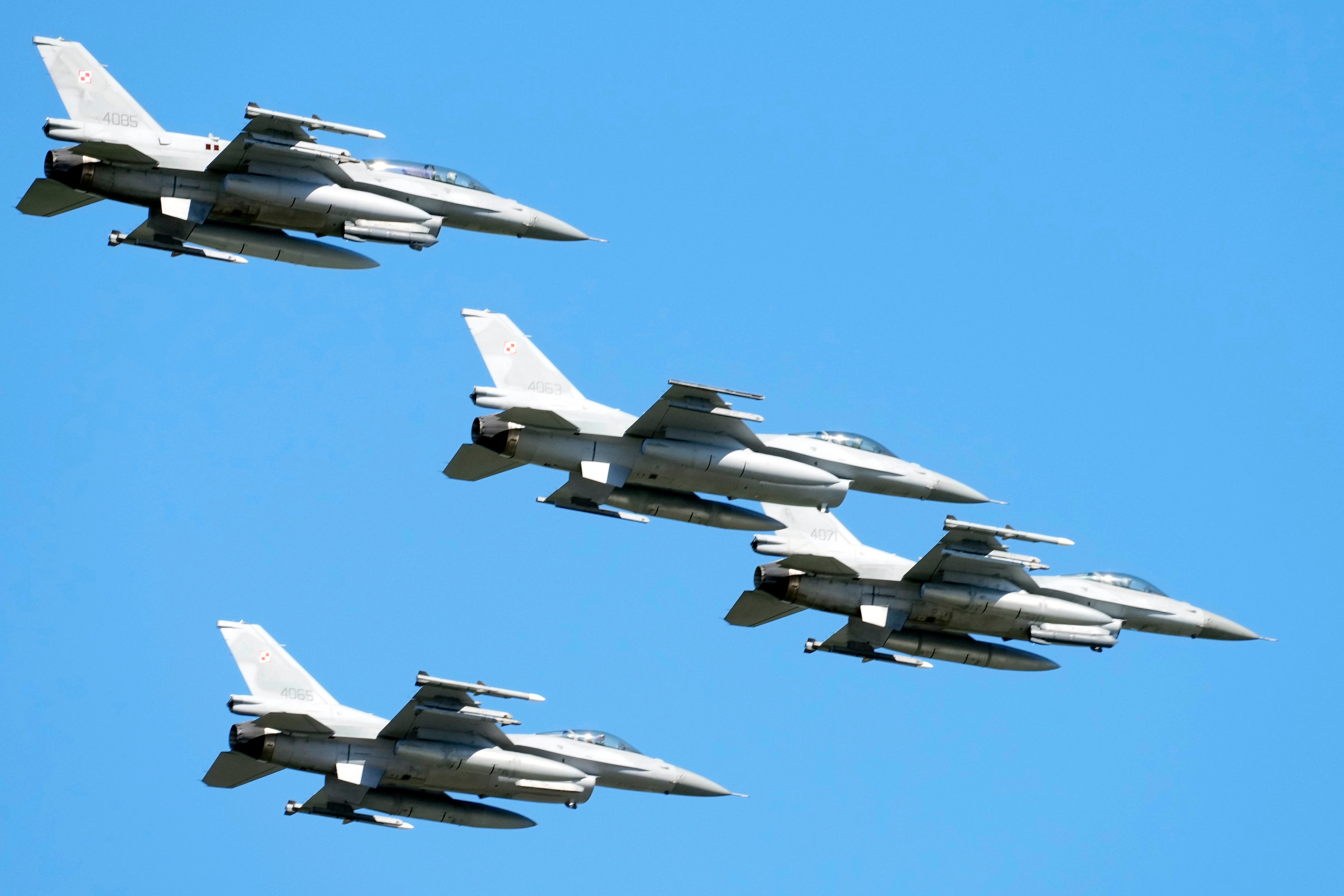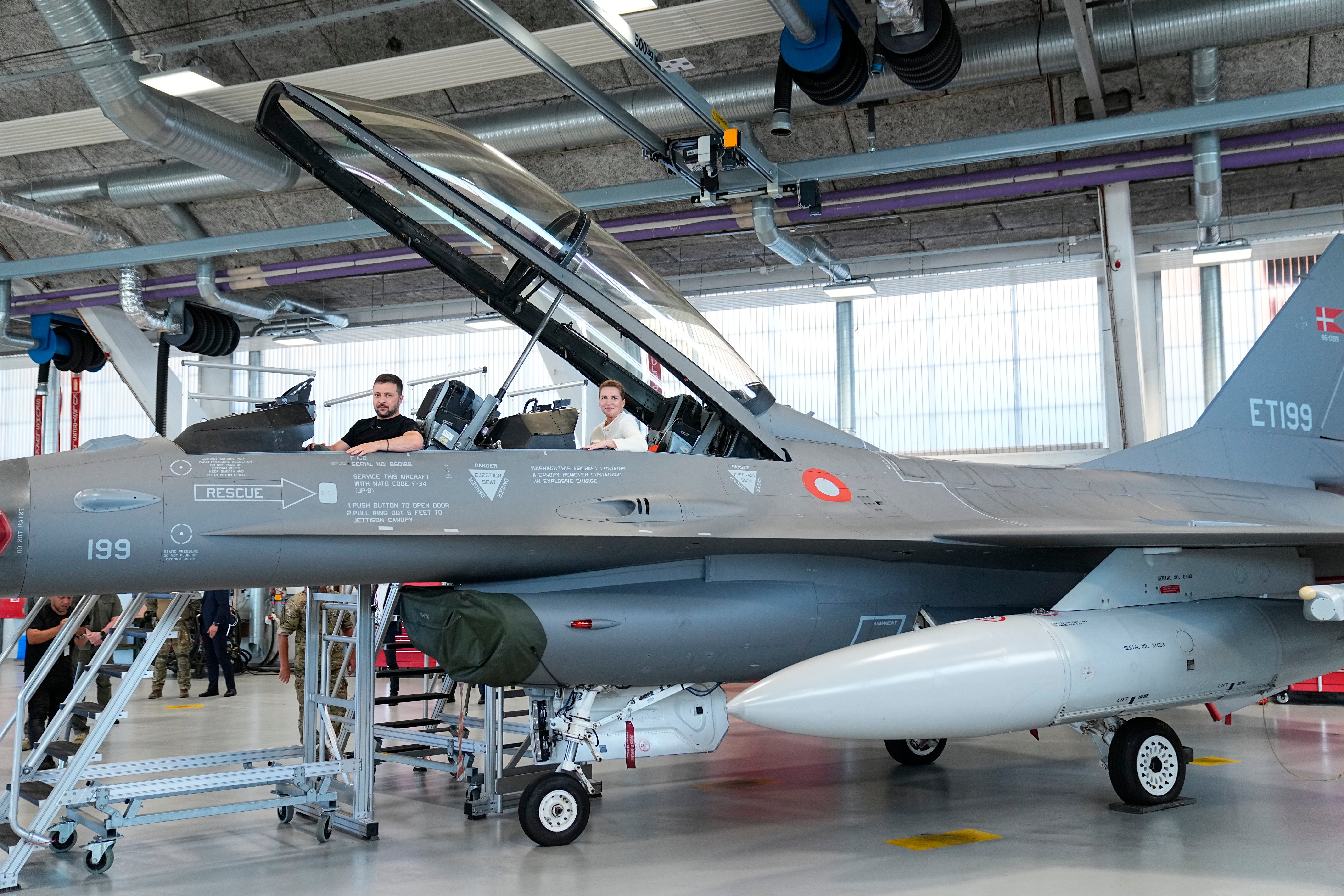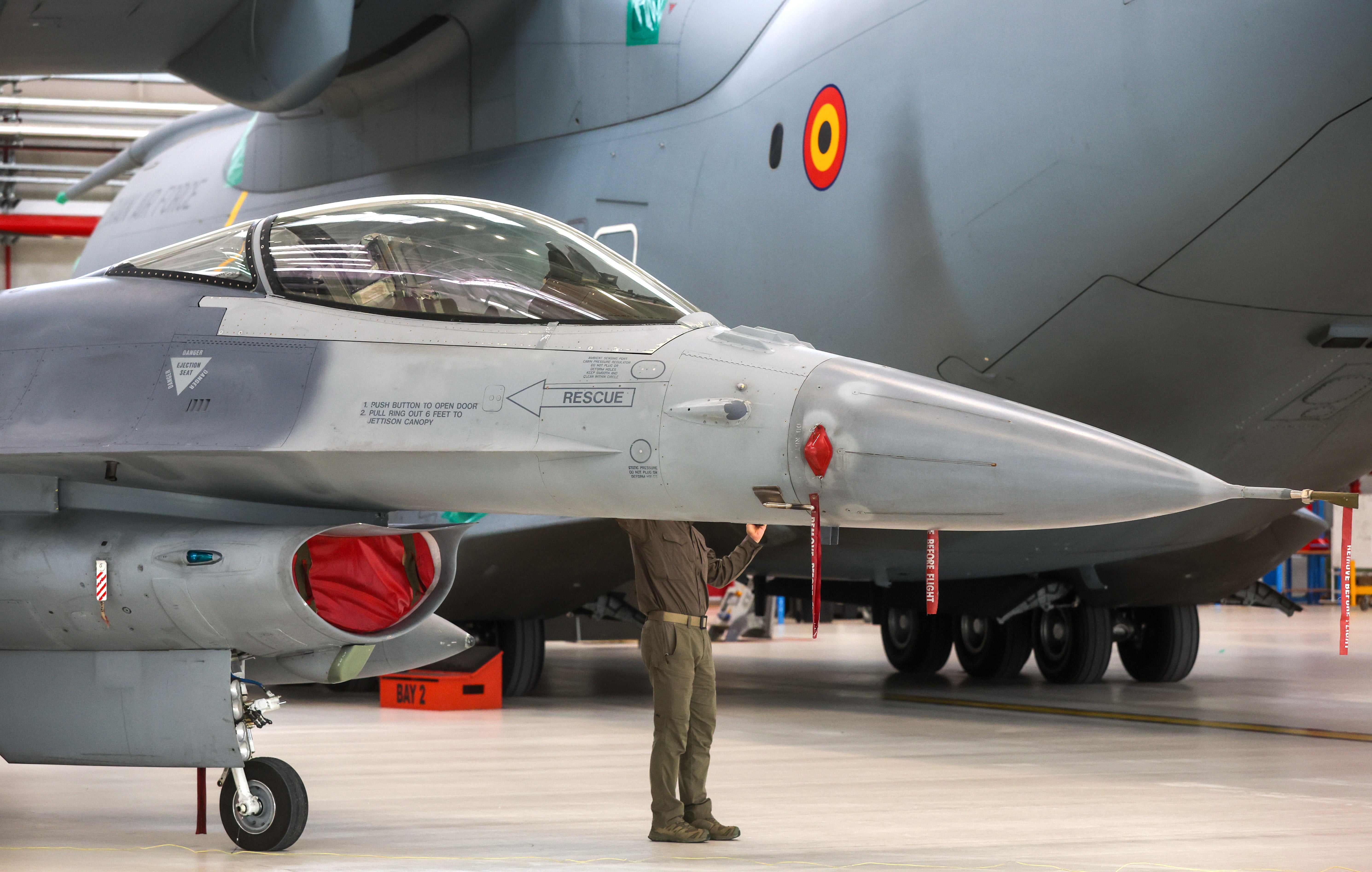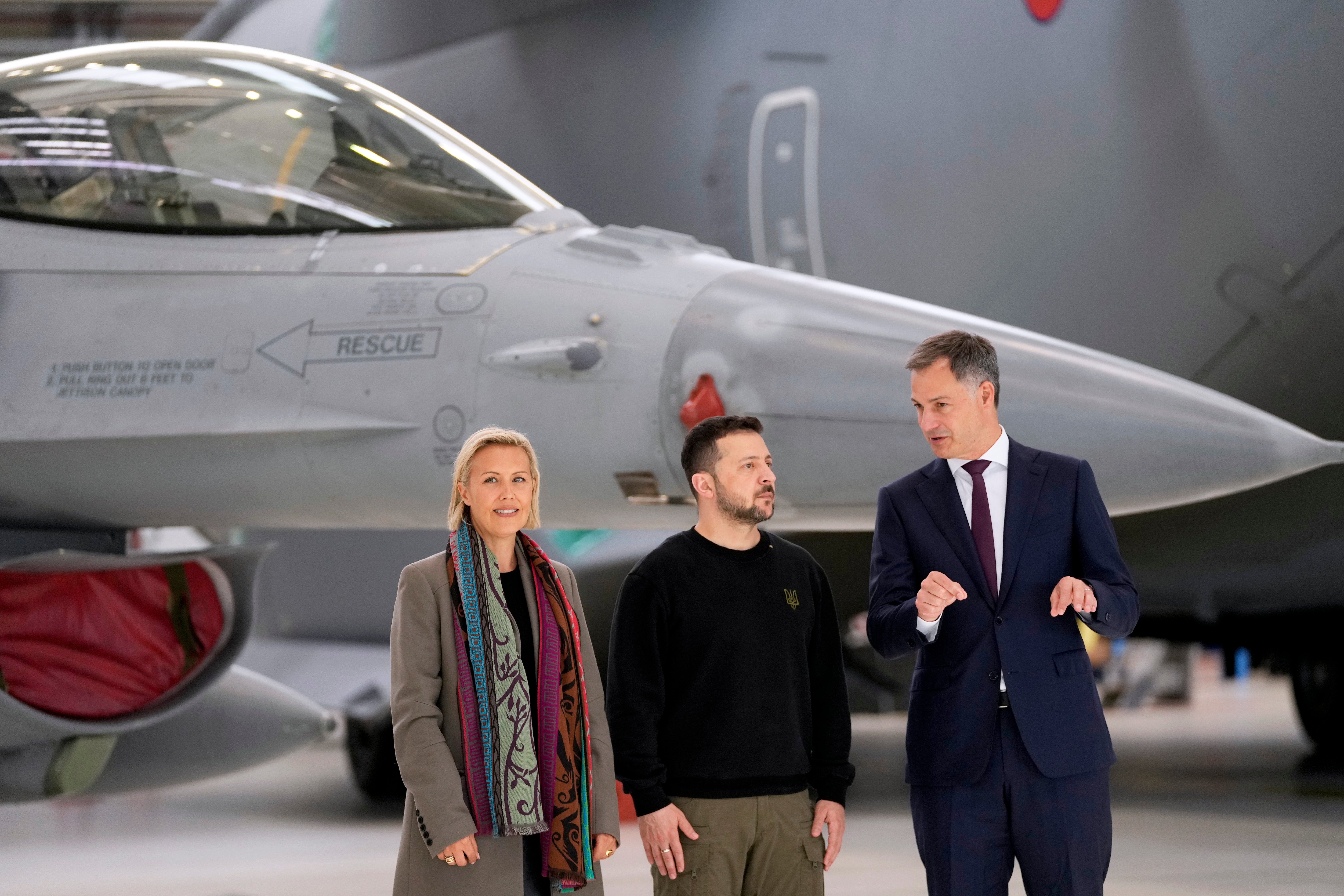How Ukraine’s new F-16 fighter jets will help the fight against Putin’s forces and Russia’s drone attacks
Four European countries are set to deliver scores of ageing F-16s to Ukraine over the next few months

Your support helps us to tell the story
From reproductive rights to climate change to Big Tech, The Independent is on the ground when the story is developing. Whether it's investigating the financials of Elon Musk's pro-Trump PAC or producing our latest documentary, 'The A Word', which shines a light on the American women fighting for reproductive rights, we know how important it is to parse out the facts from the messaging.
At such a critical moment in US history, we need reporters on the ground. Your donation allows us to keep sending journalists to speak to both sides of the story.
The Independent is trusted by Americans across the entire political spectrum. And unlike many other quality news outlets, we choose not to lock Americans out of our reporting and analysis with paywalls. We believe quality journalism should be available to everyone, paid for by those who can afford it.
Your support makes all the difference.Ukraine has received its first batch of F-16 fighter jets nearly a year after President Zelensky pleaded for them to help counter Russia’s invasion.
Six jets, which will be fitted with modern US weaponry, were delivered to Ukraine from the Netherlands, with more to follow shortly from Denmark.
The two countries, as well as Belgium and Norway, have promised to provide Kyiv with more than 60 of the American-made planes over the next few months.
Follow live updates on Ukraine-Russia war
The fighter jets are expected to start flying sorties in Ukrainian skies soon and will be a much-needed boost to the country’s current fleet of Soviet-era jets.

But with analysts warning the F-16s won’t turn the tide of the war on their own, how will they help Kyiv fight Putin’s forces? The Independent takes a look below.
How will F-16s help the fight against Putin’s forces?
“They will be able to affect some of the dynamics of the war,” Federico Borsari, an analyst at the Center for European Policy Analysis, said.
Ukraine would use the jets to intercept Russian missiles and drones, suppress enemy air defence systems, and strike Russian troop positions and ammunition depots with air-to-ground missiles, Mr Borsari said. Russia has stepped up drone and missile attacks across Ukraine in recent months.
The plane’s advanced radars – fitted by Lockheed Martin – would allow Ukrainian pilots to pinpoint targets further away than they can in their current Soviet-era MiG-29s, Su-27s and Su-24s.
They could also carry British-supplied Storm Shadow air-launched cruise missiles with a range of more than 250km (155 miles), potentially striking targets inside Russia – but information on the plane’s capability is unclear.

What are the challenges for Ukraine?
Supporting Ukrainian troop movements on the front line with ground attacks may be too risky for the F-16s, given Russia’s sophisticated air defense systems.
Dr Marina Miron, analyst at the Defense Studies Department at King’s College London, also warned Kyiv’s nine-month training on using the F-16s was a “crash course” compared to the usual three-year course Western pilots receive.
The F-16s also require a large number of support personnel, such as skilled maintenance engineers, munitions loaders, intelligence analysts and emergency crews, Ms Miron added.
Ukraine must also establish a network of radar stations, reinforced hangars, a supply of spare parts and refueling systems, with quality airfields needed to store the jets, she added.

How could Putin react?
Russian president Vladimir Putin would savor the image that destroying F-16s from Nato countries would bring, Mr Borsari said.
The Kremlin’s forces will likely try to destroy the F-16s on the ground with long-range missiles. They have already been targeting Ukraine’s limited number of suitable airfields.
Russia’s military also has what are estimated to be several hundred operational fighter jets, as well as sophisticated air surveillance radars. Russia’s Su-35 fighter jet will be one of the biggest threats to the F-16.
Even so, the Russians are aware that they’ll be up against a more formidable aircraft than they have met so far in the war and will likely adopt a more careful approach.



Join our commenting forum
Join thought-provoking conversations, follow other Independent readers and see their replies
Comments